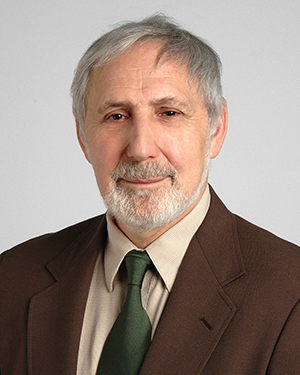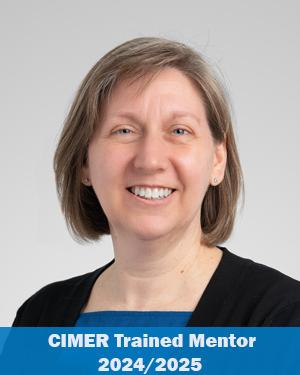Research News
07/07/2023
Topical ointment shows promising results for skin cancer treatment
The topical ointment uses the small molecule PALA, first developed to treat cancer 50 years ago.

(Left to right) Dr. Stark, Kala Mahen and Dr. Christine McDonald published results on their research into using PALA for skin cancer treatment in June.
Current treatment options are limited for the 1 in 5 Americans diagnosed with skin cancer. Surgical removal is both invasive and incomplete – ridding the skin of the cancerous lesions but sometimes leaving dangerous precancerous cells behind.
Cleveland Clinic researchers are in pursuit of a more comprehensive option for non-melanoma skin cancer, based on a small molecule first created decades ago. Results published in Experimental Dermatology show that an ointment containing the molecule PALA (N-phosphonacetyl-L-aspartate) treated skin cancer lesions in as little as three weeks. The treatment is ready for clinical trials, after researchers found it was both effective and non-toxic in preclinical models.
"Despite how common skin cancer is, we still are in desperate need of more options for treatment," says George Stark, PhD, Distinguished Scientist at Cleveland Clinic and staff in Cancer Biology. "The current approved treatments highly irritate the skin, which is a key differentiator for our treatment."
Skin cancer is often caused through exposure to ultraviolet radiation, usually sunlight. Because the sun hits an area, not just one spot, the cells around where lesions appear are often also pre-cancerous. When doctors remove skin cancer lesions through surgery – the current standard for treatment – these cells are left behind.
In contrast, the PALA ointment treats the cancer and precancerous cells surrounding the lesion, reducing future cancer risk, according to the study. Because it's non-invasive and less irritating, the researchers are exploring whether it could also be tested in preclinical models for melanoma and other cancers that could be treated externally, like oral cancer.
Adapting an innovative molecule for a new purpose
Research is the foundation for small-molecule treatments, like the PALA ointment, through investigating molecular interactions within specific cancers or other diseases. The basis for this treatment originated in Dr. Stark's lab at Stanford University in the 1960s, when his team mapped the way cancer cells create enough energy to survive. PALA was synthesized to block the function of an enzyme essential in this process called CAD (carbamyl phosphate synthetase II/aspartate transcarbamylase/dihydroorotase).
Introducing PALA meant cancer cells starved from not being able to make enough of the fuel they need. Initial treatments using PALA proved too toxic when used internally and did not progress through clinical trials. Decades later, Christine McDonald, PhD, staff in Inflammation & Immunity, reached out to Dr. Stark because she found another potential application: immune activation.
Through her research, Dr. McDonald found CAD regulated an immune response protein called NOD2 in cells found in both the gut and the skin. Initial research using PALA in specific concentrations started with treatment of wounds infected with and antibiotic-resistant bacteria. Because CAD is in the same cells as NOD2, applying PALA sets off signaling processes to attack the bacteria.
Drs. Stark and McDonald connected with Edward Maytin, MD, PhD, section head of Molecular Dermatology in Cleveland Clinic's Dermatology Department, to test the treatment in skin cancer models.
"PALA prompts a one-two punch for treatment," Dr. McDonald says. "Along with stopping the tumor from growing, it activates signaling pathways that draw tumor killing immune cells to the site of the cancer."
The paper notes that using a topical treatment like the PALA ointment could also be useful as an addition to other traditional cancer therapies.
"This is a major opportunity to extend our horizons in cancer care," says Dr. Stark. "It's imperative that we keep innovating not just in skin cancer, but in other cancers that can benefit from topical, non-invasive treatments."
Featured Experts
News Category
Related News
Research areas
Want To Support Ground-Breaking Research at Cleveland Clinic?
Discover how you can help Cleveland Clinic save lives and continue to lead the transformation of healthcare.
Give to Cleveland Clinic
